OVERVIEW
RRI believes in a holistic approach to public service and emergency communications. Our affiliated programs are designed to integrate several different programs and radio services to better serve local communities in time of emergency.
Four levels of service are envisioned, which are defined by coverage area from the neighborhood level through the national and international level:
Neighborhood Level: In the absence of commercial telecommunications common carrier services, such as the Internet and cellular mobile data networks, the licensed radio amateur can provide basic emergency communications services to his neighborhood through the National SOS Radio Network. For example, during a hurricane or wildfire incident, RRI volunteers monitor Family Radio Service (FRS) channel one for emergency requests from individuals in their immediate area. The RRI volunteer can then access local emergency services via VHF or UHF emergency communications networks typically operated by cooperating programs such as the Amateur Radio Emergency Service (ARES), Radio Emergency Associated Citizen Teams (REACT), or the like. The RRI volunteer can also provide basic messaging service to his neighborhood or community by transmitting text messages (called “radiograms) for those in the disaster area via RRI international networks, the Winlink network, or other affiliated, survivable communications systems.
Community Level: As with the National SOS Radio Network, the RRI Neighborhood Radio Watch (“Neighborhood Hamwatch”) program is designed to support local volunteer organizations active in disaster response (VOADs). RRI, in cooperation with local amateur radio clubs, trains local VOADs to efficiently use and deploy basic, survivable communications systems built on FRS and GMRS interoperable assets. These basic radio services facilitate internal communications within the organization, while radio amateurs provide a gateway from the FRS/GMRS layer to local emergency services or international networks. This “force multiplier” concept ensures efficient use of local amateur radio volunteer resources, while also providing an organized communications pathway between VOADs and local emergency management agencies or emergency services.
State/Provincial Level: In cooperation with organizations such as the American Radio Relay League (ARRL), RRI supports statewide networks operating under the auspices of the National Traffic System, which is managed in a cooperative arrangement between both organizations. These networks link local emergency operations centers with state agencies, provide access to surrounding municipalities and counties, and enhance overall connectivity between agencies. RRI training classes are provided to Amateur Radio Clubs and emergency communications organizations on a variety of subjects. Standard radiogram and radiogram-ICS213 message formats are used to ensure accountability and appropriate message tracking and the servicing of replies.
National/International Level: RRI operates a system of layered radio networks that facilitate the transfer of messages throughout the United States and Canada as well as locations overseas. Our survivable Digital Traffic Network backbone operates in the high frequency radio spectrum as do our flexible, basic radiotelegraph (CW) and radiotelephone networks. All networks utilize a standard radiogram or radiogram-ICS213 message format.
RRI also sponsors the Boy Scout Radio Watch program, which is designed to introduce scouts to the purposeful use of two-way radio. RRI volunteers provide scouts with training on basic radiotelephone communications procedures, net operations, radiogram format and similar communications techniques. Scouts are also introduced to various Amateur Radio technologies and networks. The Boy Scout Radio Watch program is ideally suited for a partnership between RRI and local radio clubs.
I AM SAFE PROGRAM
A suite of documents and software that can assist in the transmission of welfare related messages from a disaster area.
National SOS Radio Network
A networks of local radio amateurs link citizens equipped with common FRS walkie-talkies to local emergency services during disaster situations. This program allows citizens to request assistance from local emergency response organizations when cellular networks or telephone service is unavailable.
Neighborhood Radio Watch (“Hamwatch”)
Integrates volunteer organizations active in disaster response (VOADs) into a cohesive, interoperable emergency communications program. Local amateur radio clubs train VOADs in basic radio communications techniques using RRI training materials. These VOADS then establish their own interoperable FRS/GMRS network for internal communications, with volunteer radio amateurs providing connectivity from the VOAD network to both local emergency management and international messaging networks such as RRI and Winlink.
Boy Scout Radio Watch
Introduces scouts to the purposeful use of two-way radio technology. Scout units are trained in basic radiotelephone procedures, the radiogram and radiogram-ICS213 message formats, and the technology of radio communications. Assistance is also provided for scouts interested in obtaining an amateur radio license. Scout units can also be integrated into the local public service and emergency communications organizations.
